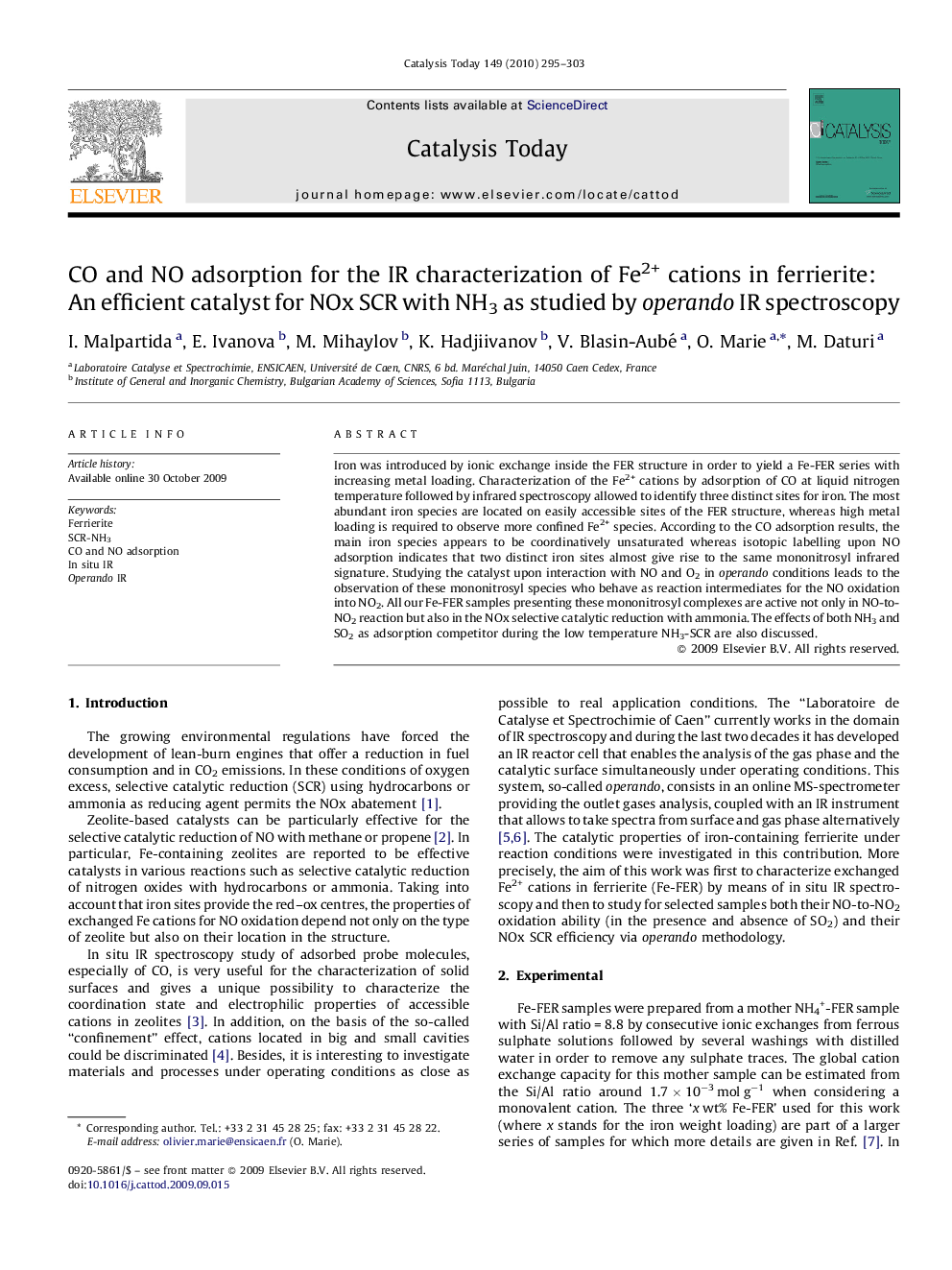| Article ID | Journal | Published Year | Pages | File Type |
|---|---|---|---|---|
| 56645 | Catalysis Today | 2010 | 9 Pages |
Iron was introduced by ionic exchange inside the FER structure in order to yield a Fe-FER series with increasing metal loading. Characterization of the Fe2+ cations by adsorption of CO at liquid nitrogen temperature followed by infrared spectroscopy allowed to identify three distinct sites for iron. The most abundant iron species are located on easily accessible sites of the FER structure, whereas high metal loading is required to observe more confined Fe2+ species. According to the CO adsorption results, the main iron species appears to be coordinatively unsaturated whereas isotopic labelling upon NO adsorption indicates that two distinct iron sites almost give rise to the same mononitrosyl infrared signature. Studying the catalyst upon interaction with NO and O2 in operando conditions leads to the observation of these mononitrosyl species who behave as reaction intermediates for the NO oxidation into NO2. All our Fe-FER samples presenting these mononitrosyl complexes are active not only in NO-to-NO2 reaction but also in the NOx selective catalytic reduction with ammonia. The effects of both NH3 and SO2 as adsorption competitor during the low temperature NH3-SCR are also discussed.
